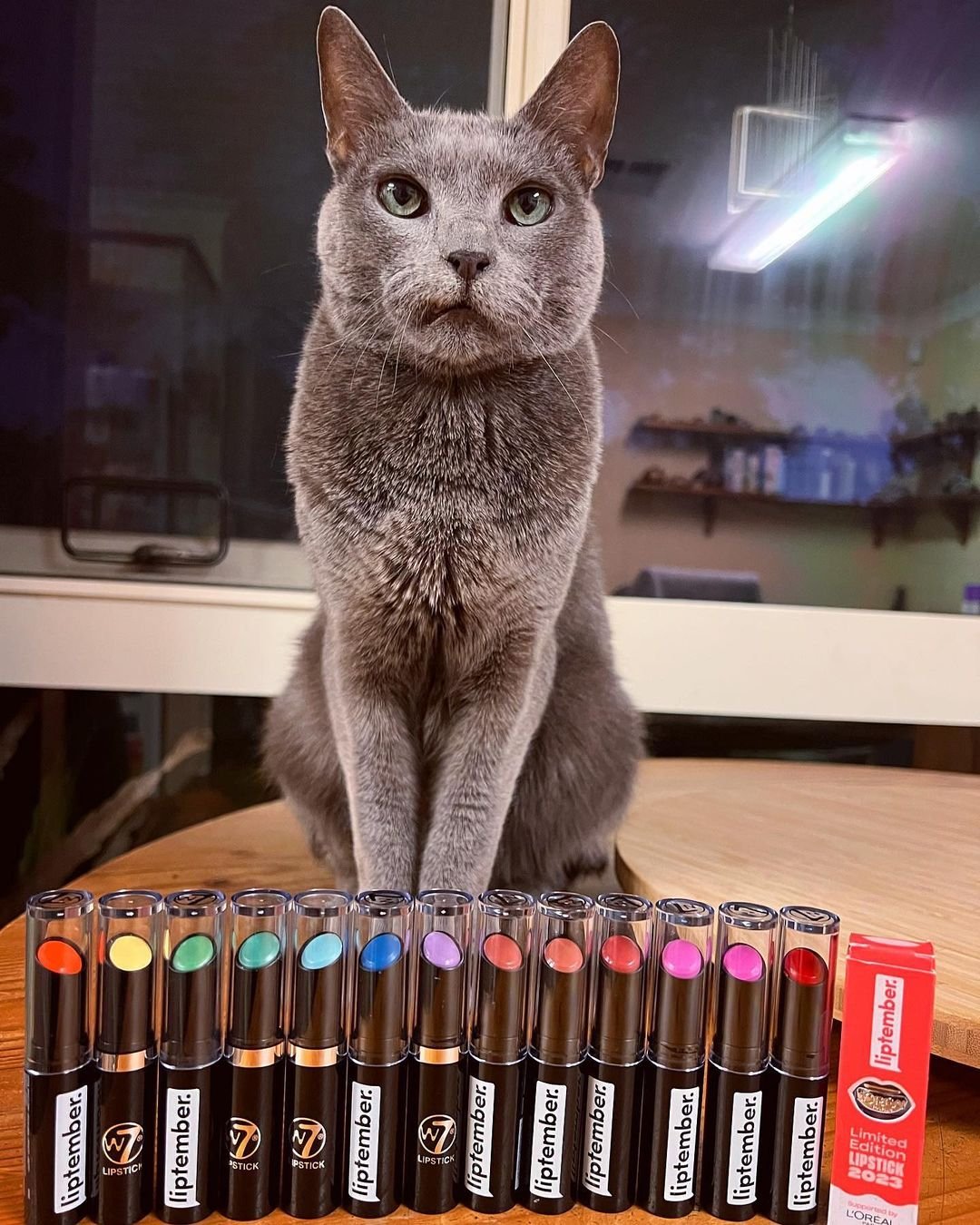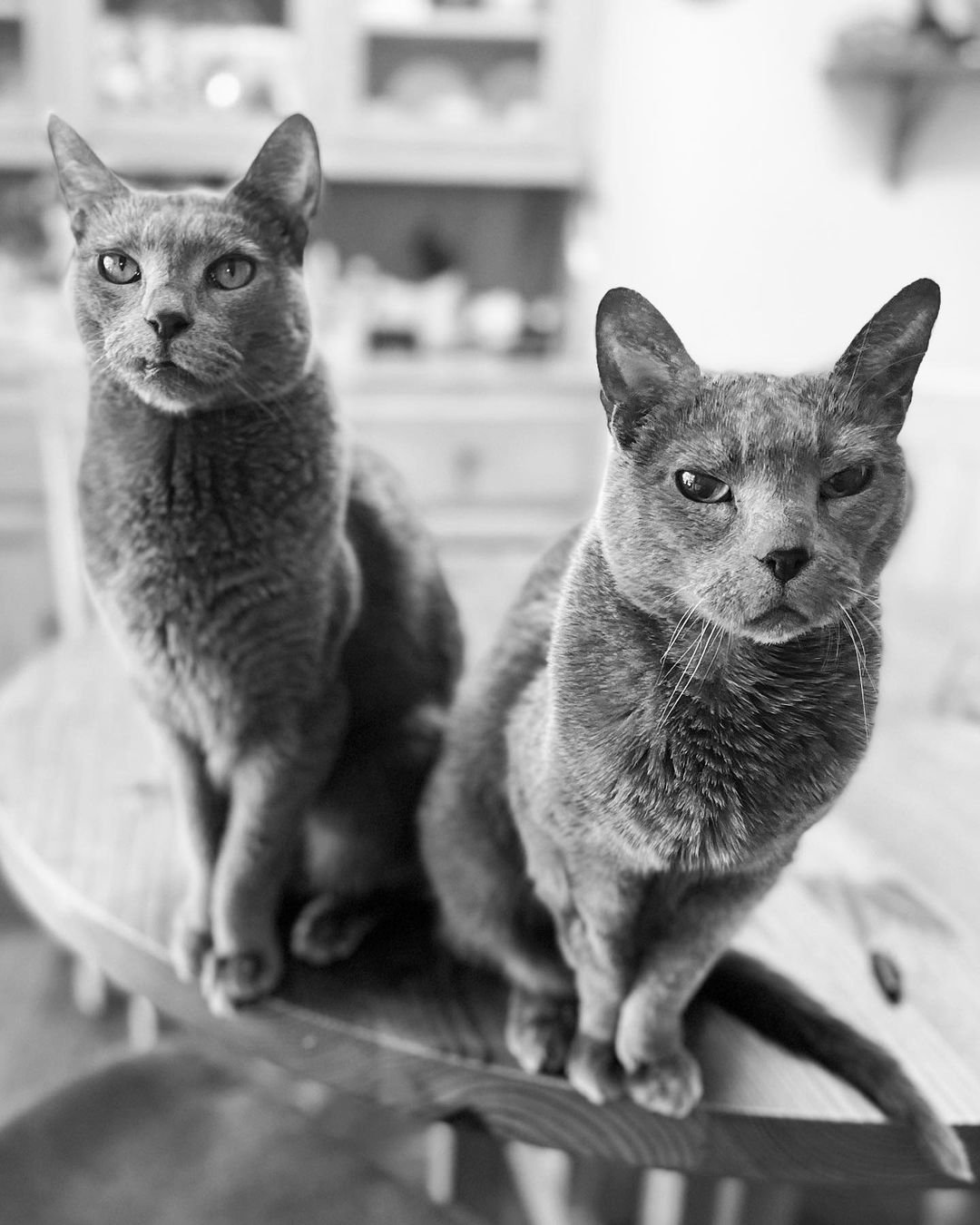More info
More information about our lovely purebred Russian Kittens
Inspiration for Your Next Kitten

Russian Blue Overview
Russian blues are known for their thick blue-gray coat and bright eyes. These sweet, loyal, and cautious cats love having a routine, and a loving temperament, independent streak, and low grooming requirements make the Russian blue cat a great family pet. If you have the patience to socialize this shy kitty, you'll gain an affectionate family member devoted to you.

Russian Blue Overview
The Russian blue is a fairly common breed, and kittens from a reputable breeder typically cost between $400–$600. Learn more about the Russian blue's appearance, temperament, living needs, and history.

Appearance
Russian blues are medium-sized cats with plush, dense short coats that stand out from their bodies and make them appear larger than they truly are. Their soft, silky coats are a dark, charcoal gray shade tipped with light, shimmering silver. Because these cats shed lightly and have lower levels of known feline allergens, some pet owners consider them "hypoallergenic." "These cats produce very low levels of glycoprotein Fel d 1, which is the protein in cats that creates allergies in people," says Natalie L. Marks, DVM, CVJ, a veterinarian at Blum Animal Hospital in Chicago.

So while there is no such thing as a truly hypoallergenic cat, some breeds, including the Russian blue, might be a better fit for some people with allergies. Before bringing home a Russian blue kitten, spend time with the breed to see how your allergies react. One of the most interesting aspects of a Russian blue's appearance is her eyes, which change in hue from yellow to green over time. Like all kittens, Russian blue kittens are born with blue eyes. The blue fades to a light yellow or golden, then turns to yellow with a green ring around four months old and, finally, turns fully bright green in adulthood.These cats typically weigh 7–12 pounds and stand around 10 inches high.

Russian Blue Temperament
Russian blue are sweet and loyal cats who love to follow their owners around and greet them at the door when they arrive. These pets can be cautious and shy but are incredibly affectionate once they get acquainted with a new human. When Russian blues feel confident and comfortable in their new homes, they become playful, loving pets. They typically get along with kids and other animals, including other cats and the family dog—and despite their affectionate nature, they are calm and not at all clingy. That said, while these sensitive lapcats enjoy being with their people, they can become uncomfortable or withdrawn around strangers.

Living Needs
Russian blues prefer a familiar schedule and might not do well when confronted with new situations. A calm, predictable living environment without frequent visitors is the best fit for these sensitive, shy cats. Just because they're wary of strangers doesn't mean these cats don't love company—they do! Russian blues are likely to be great fits with your family members and get along well with other pets and children whom they've had a chance to warm up to.